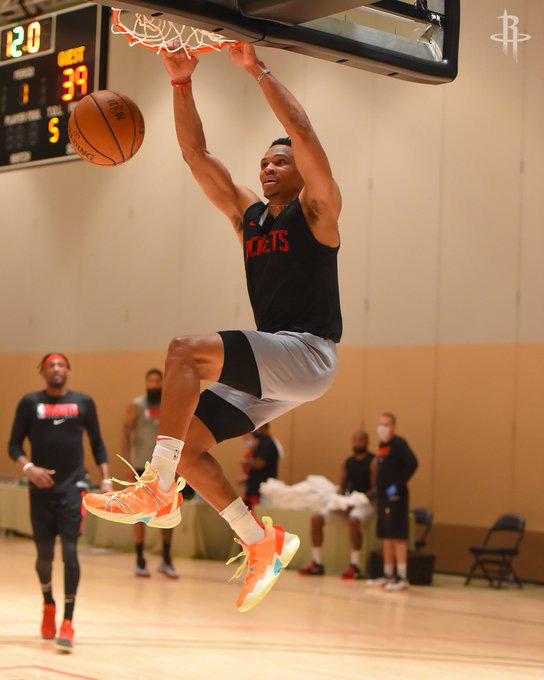Home »
Misc »
How to do the three man weave basketball drill
How to do the three man weave basketball drill
How to Run the Three Man Weave Drill (and Why You Should)
Practice time is precious to a coach, regardless of age level.
No matter if you’re coaching your child’s elementary school team or preparing for the NBA Finals, every team needs some warm up activity at the beginning of practice to get blood flowing both physically and mentally.
One of the most popular warm up drills for basketball teams is the "Three Man Weave".
This drill works on passing and catching on the fast break, communication, finishing, and running the floor hard.
While it may not mimic the action of a live game, the three man weave is still a useful drill to get your players engaged at the beginning of practice, and also to reinforce basic fundamentals that every coach wants their players to use in a game.
What You Need to Run It:1. At Least Three PlayersThe three man weave is a great warmup drill to run with an entire team because it can be performed in groups, but could also be used in a group as small as three.![]()
2. One BasketballOnly one group will perform the three man weave at a time, so an entire team could do the drill with just one ball. However, it is recommended to use a second ball in order to make the transitions between groups quicker.
3. A Full CourtThe 3-man weave is a drill that will require finishing at a basket on both ends of the floor.
How to Set Up the Three Man Weave:Separate your team into 3 even lines across the baseline.
One line should form in the middle of the baseline directly underneath the basket, and the other 2 lines should form in equal distances on either side of that middle line.
Competitive middle school teams or higher should be able to form the two outside lines either where the three-point line meets the baseline, or even further out to where the sideline meets the baseline. But if you’re coaching an elementary school team, you may need to bring those lines in closer.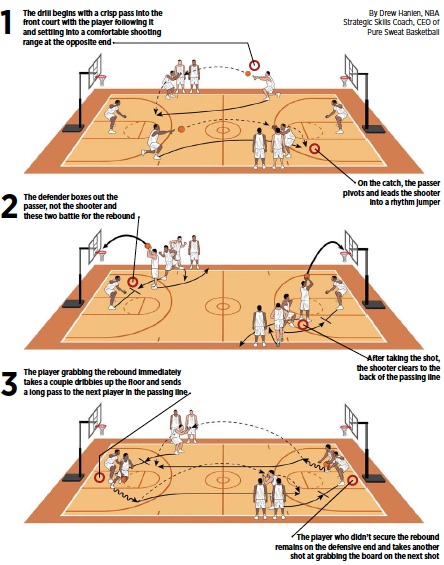
The player in the front of the middle line needs a basketball, and so does the second player in that same line.
The first player in each line is the first group that will perform the drill.
All other players are “out” to start the drill, but will quickly be rotated in.
How to Run the Three Man WeaveThe first player in the middle line can make a chest pass to either outside line to begin the drill, and then must sprint behind the player they passed to.
The player who caught the first pass must then make another chest pass to the third player and sprint behind him.
The group moves up the court with each pass, and this pattern repeats until the final bounce pass to the scorer, who must make a layup.
After making the layup, the same group runs the same drill back to the original baseline, finishing with another layup
Once the group has weaved down and back, they fill in the end of each line, and the second group is “in.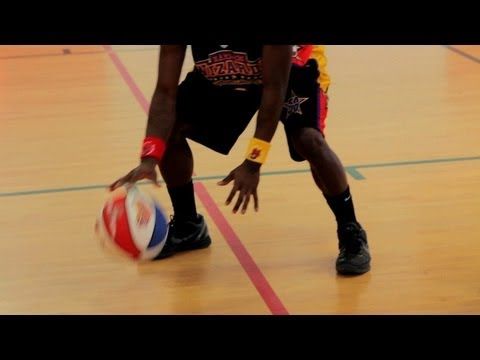 ”
”
The three man weave should be a continuous drill.
Once the second layup is made, the next group should be starting to weave down the court.
Set a goal like “X makes in X minutes” or “less than X dropped passes” to keep everyone engaged and working together.
Reasons to Run the Three Man WeaveWe’ve established how to run the three man weave, but why should your team be spending valuable practice time on it?
a. Works Basic FundamentalsSimple fundamentals like passing and catching the basketball are often overlooked, and the three man weave will give your players a number of repetitions to work on both.
A drill that emphasizes making good passes, catching every pass with both hands, and finishing open layups can serve as a good reminder when used as a warm up at the beginning of practice.
b. Forces Players to CommunicateThe younger your team, the worse your players probably are at communicating with one another on the court.
The three man weave is an easy way to force your players to work on that communication by making them call out the name of the player they are passing to on every single pass.
c. Gets Everybody MovingThe primary objective of the three man weave is to get your entire team warmed up, both mentally and physically.
This drill will get all of your players sprinting up and down the court, working together to reach a goal, and it gets everybody involved in a short amount of time.
Arguments Against the Three Man WeaveThe three man weave is a good drill to use as a warm up, but it shouldn’t be a cornerstone of your practices or something your team spends a ton of time doing.
The primary argument against using the three man weave is that the passing and cutting behind involved in the drill does not resemble game-like situations.
I wouldn’t argue with anyone who made this case.
The reality is that wide open chest passes to wide open players are few and far between within the action of a real game, as are wide open layups.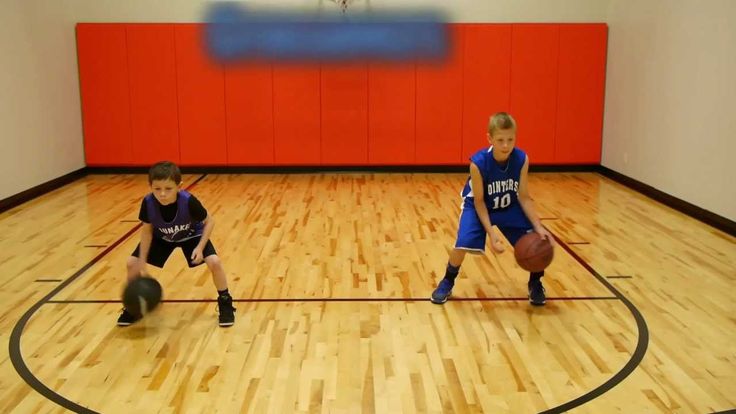
And your team will never weave up the court during a real fast break.
Ultimately, live action drills will go much further to improving your players’ individual fundamentals, and also your team’s transition game.
Which is why I recommend thinking of the three man weave as a “warm up the body” drill.
ConclusionEven though the three man weave is not an action your players will use during a real game, it is still a great warm up drill that has been popular among coaches for decades.
It may not develop your players into great passers or finishers on its own, but it still warms up the muscles necessary to work on those skills, and also gets your team communicating and working together towards a goal.
When used correctly, the three man weave is a quick and easy way to get your entire team warmed up and ready to practice at full speed.
how to do 3 man weave
TikTokUpload
For You
Following
matthackenbergbasketball
Hack
3 man weave for warmup #coachingbasketball #basketball #basketball🏀 #teachingbasketball #coachingdrills #drills #basketballdrills #coaching #basketballcoach
TikTok video from Hack (@matthackenbergbasketball): "3 man weave for warmup #coachingbasketball #basketball #basketball🏀 #teachingbasketball #coachingdrills #drills #basketballdrills #coaching #basketballcoach".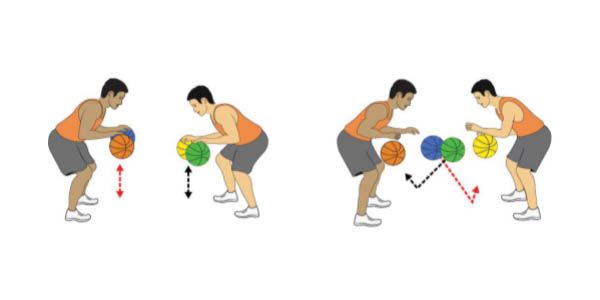 3 man weave drill. A Milli.
3 man weave drill. A Milli.
4254 views|
A Milli - Lil Wayne
coach_bk25
Coach BK 🏀
One of my favorite 3 - Man Weave Variations! 💯 #basketball #basketballtraining #basketballtrainer #basketballdrills #basketballworkout #basketballtips #coachbk
602 Likes, 5 Comments. TikTok video from Coach BK 🏀 (@coach_bk25): "One of my favorite 3 - Man Weave Variations! 💯 #basketball #basketballtraining #basketballtrainer #basketballdrills #basketballworkout #basketballtips #coachbk". Team Drills 👀🔥💯. original sound.
9398 views|
original sound - Coach BK 🏀
coach_bk25
Coach BK 🏀
Which is your favorite Drill? 🧐🔥💯 #fundamentallysound #fyp #teamdrills #basketball #coachbk
7.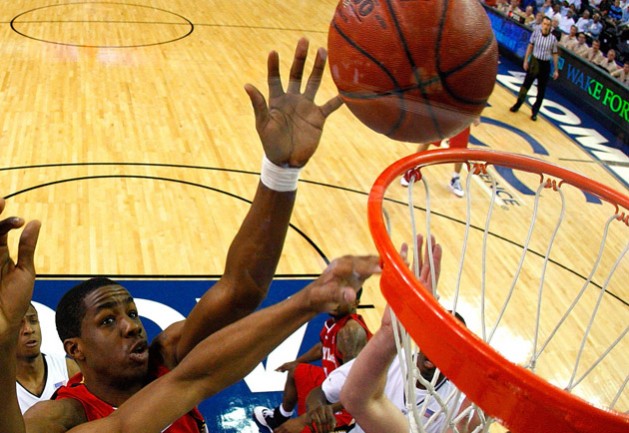 1K Likes, 37 Comments. TikTok video from Coach BK 🏀 (@coach_bk25): "Which is your favorite Drill? 🧐🔥💯 #fundamentallysound #fyp #teamdrills #basketball #coachbk". 1️⃣ Wide | Which is your favorite Drill? 🧐 | 3 - Man Weave (Variations) 👌🏽🔥💯 | .... original sound.
1K Likes, 37 Comments. TikTok video from Coach BK 🏀 (@coach_bk25): "Which is your favorite Drill? 🧐🔥💯 #fundamentallysound #fyp #teamdrills #basketball #coachbk". 1️⃣ Wide | Which is your favorite Drill? 🧐 | 3 - Man Weave (Variations) 👌🏽🔥💯 | .... original sound.
119.9K views|
original sound - Coach BK 🏀
london_excelerate
London Excelerate
Junior team practising their 3-man weave last session. More drills tmrw! #basketball # basketballtraining # womeninbasketball
TikTok video from London Excelerate (@london_excelerate): "Junior team practising their 3-man weave last session. More drills tmrw! #basketball #basketballtraining #womeninbasketball". 3 man weave . original sound.
7038 views|
original sound - London Excelerate
therealdelsontraining
Therealdelsontraining
THREE MAN WEAVE ball can’t touch the floor… Name a Drill You Want Me To Do Next 🤔
56.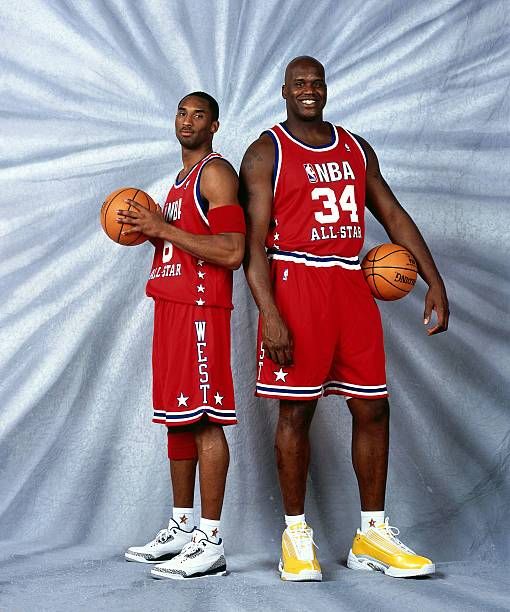 7K Likes, 471 Comments. TikTok video from Therealdelsontraining (@therealdelsontraining): "THREE MAN WEAVE ball can’t touch the floor… Name a Drill You Want Me To Do Next 🤔". THREE MAN WEAVE ball can’t touch the floor | Name A Drill You Want Me To Do 🤔. original sound.
7K Likes, 471 Comments. TikTok video from Therealdelsontraining (@therealdelsontraining): "THREE MAN WEAVE ball can’t touch the floor… Name a Drill You Want Me To Do Next 🤔". THREE MAN WEAVE ball can’t touch the floor | Name A Drill You Want Me To Do 🤔. original sound.
711.5K views|
original sound - Therealdelsontraining
coachdolfs
Marlon Adolfo
Basic 3 Man Weave 💯 #fyp #foryou #foryoupage #trend #tiktokph #dolfsbasketball #levelupbasketballacademy
248 Likes, 11 Comments. TikTok video from Marlon Adolfo (@coachdolfs): "Basic 3 Man Weave 💯 #fyp #foryou #foryoupage #trend #tiktokph #dolfsbasketball #levelupbasketballacademy". original sound - Marlon Adolfo.
5968 views|
original sound - Marlon Adolfo
meddexx
Meddexx Barber
Tag a friend who needs this @babylissprobarber #barbershop #manweave @meddexx
56.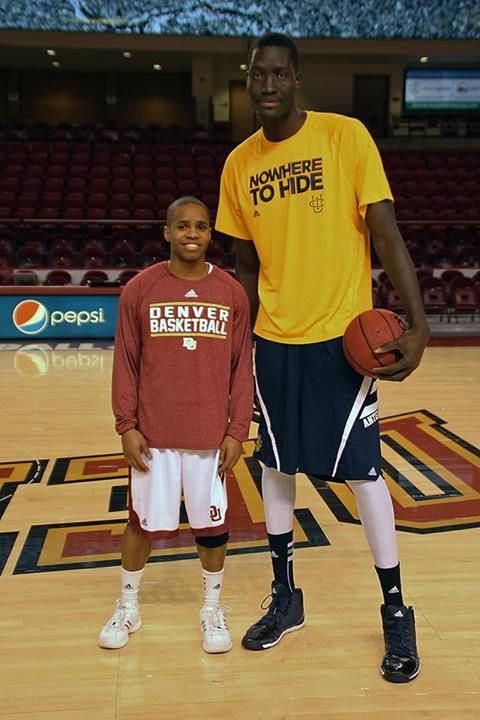 5K Likes, 668 Comments. TikTok video from Meddexx Barber (@meddexx): "Tag a friend who needs this @babylissprobarber #barbershop #manweave @meddexx". Quick manweave tutorial | 1 - fade | 2- draw the outlines | .... Kwaku the Traveller.
5K Likes, 668 Comments. TikTok video from Meddexx Barber (@meddexx): "Tag a friend who needs this @babylissprobarber #barbershop #manweave @meddexx". Quick manweave tutorial | 1 - fade | 2- draw the outlines | .... Kwaku the Traveller.
502.4K views|
Kwaku the Traveller - Black Sherif
xgeminidragonx
Gemini Dragon
3 Beat Weave #poi #tutorial #flowarts #glowstringing
3.3K Likes, 40 Comments. TikTok video from Gemini Dragon (@xgeminidragonx): "3 Beat Weave #poi #tutorial #flowarts #glowstringing". DAYLIGHT.
30.4K views|
DAYLIGHT - TELYKast, One True God
swishhdreams
Swishh Dreams
#threemanweave #3manweave #basketballchallenge #drills #practice #basketballtraining
TikTok video from Swishh Dreams (@swishhdreams): "#threemanweave #3manweave #basketballchallenge #drills #practice #basketballtraining". Three Man Weave Best Drill Ever What you think?. original sound.
Three Man Weave Best Drill Ever What you think?. original sound.
1547 views|
original sound - NBA Energy
5 Basketball Exercises to Move the Ball with Passes
There is nothing better than watching a team move the ball quickly and efficiently around the court without greed.
Overcoming the defense with smart passing the ball to each other, creating situations for open shots and passes is one of the great offensive techniques.
Want your team to do it?
Basketball passing exercises in this article will help you with this.
But first let me explain something very important...
There are two types of training exercises:
1. Technique for passing the ball.
2. Decision making during transfers.
Unfortunately, most coaches only focus on the "technical" aspect of training and forget how to train their team's decision-making ability when it comes to sharing the ball.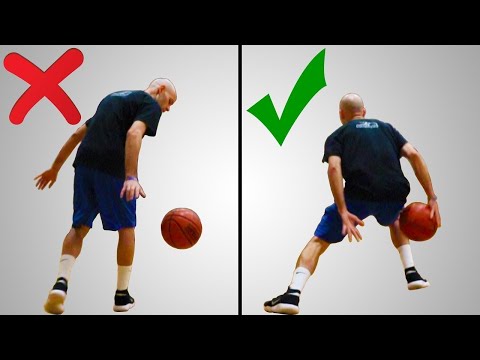
Your players will not improve their game passes by doing thousands of repetitions of chest passes.
While technical drills have their place, they are far less important than passing drills with decision making.
We must let the players learn how to read the defense and make the right decisions.
In addition, ball passing exercises are great for starting a workout to warm up your team and get them to communicate and work together.
5 ball passing exercises.
1. Advance
How the drill works:
Players form 3 columns evenly distributed along the end line. The two outside players start with the balls.
3 players advance across the court passing the ball back and forth to the middle player and then finish the exercise with two shots from under the basket.
Purpose:
A fun passing exercise that works on catching and passing without running, with communication, timing, and shooting from under the basket at game speed.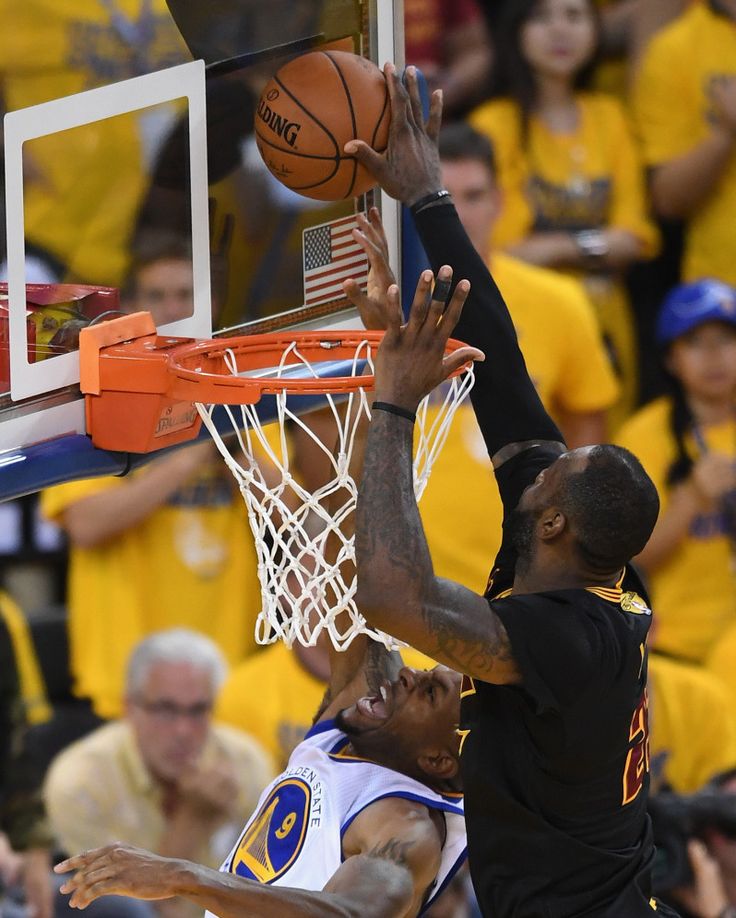
Formation:
Players form 3 columns behind the end line.
Two players on the outside lines have balls.
Instructions:
3 players (1, 2 and 5) begin to move forward on the court. The 1st outside player passes the ball to the 2nd player in the middle line.
Immediately upon receiving the ball, the center line player returns the ball to the same player on the touchline.
The 1st middle player then turns to the other side and receives a pass from the 5th outside player and immediately returns the ball to him.
Outside players may use 1-2 steps to avoid running.
The drill continues until the players reach the opposite 3-point line. When this happens, the two outside dribblers go to the basket and shoot.
The group then waits at the opposite end for the rest of the groups to complete the exercise before starting the exercise on the other side. On the right scheme at the top, the three players (4, 3 and 2) continue the exercise according to the scheme described above.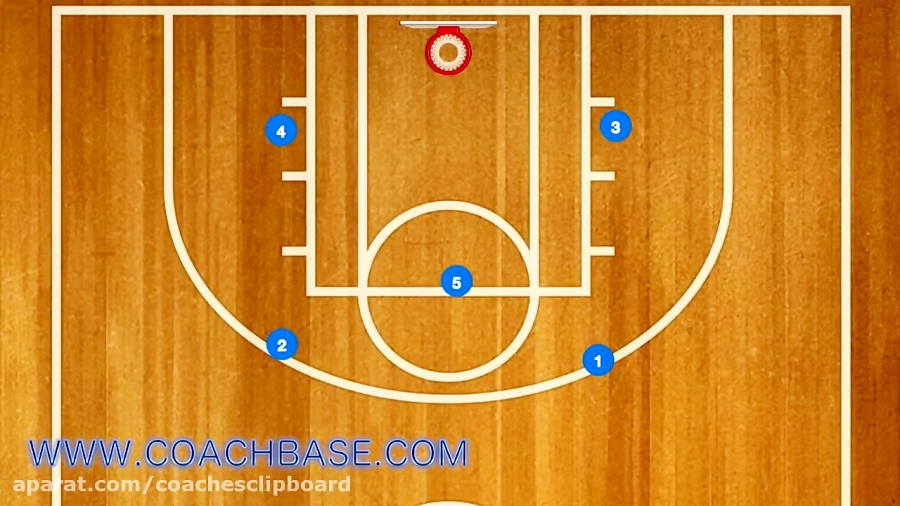
Options:
Medium or 3-point shots. Instead of ending with a run to the basket, players may end with mid-range shots or 3-point shots.
Back and forth - Instead of waiting at the other end, the troika can complete the drill both ways. Only now the threes are placed on both end lines and begin the exercise when the three from the opposite side return to their half of the court.
One Ball - If you are coaching very young players, you can run this exercise with one ball until the players understand how it works.
Coach's notes:
Passes must be passed on the move in front of the player using proper passing technique.
The receiver must hold his hands at goodie level, showing 10 fingers and calling for the ball to be passed to him.
The middle player must catch the ball and quickly pass the ball to a running partner. Don't run!
Shooting technique while moving from under the basket is very important in this exercise. Watch your footwork and make sure all players are doing it right.
2. Monkey in the middle
How the exercise works:
Players are divided into groups of three. Each group has one ball. The two transmitters lined up 12 to 15 feet apart. The third player in the group is the "monkey in the middle". He tries to hit or steal the ball. The two outside players must pass the ball to each other without using cross passes or dribbling. Simply turning and using feints to open up the passing line and pass the ball past the defender.
Goal:
A fun exercise that works on defense at the same time. This exercise will teach players how to use feints and turns to create a passing zone and also to protect the ball.
Lineup:
• Groups of 3 players.
• Each group has one ball.
• The passers are lined up 12-15 feet apart with the third player (back) in the middle.
Instructions:
1. The drill starts with the defender attacking the player who starts the drill with the ball.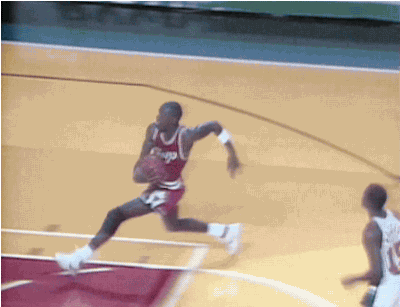
2. The attacker uses feints and steps to pass to another attacker while the defender attempts to parry or intercept the pass.
3. After each pass, the defender rushes towards the ball carrier and tries to press the ball again.
4. When the defender recovers the ball or kicks the ball, the players change positions.
Variations:
Change after a certain time - Players can change positions
after a certain period of time (depending on the age of the players, their strength and stamina), and not after each interception and elimination. For example, 30-40 seconds.
One dribbling available. Let the attacking players hit the ball once to the floor to open up the passing corner. It will be tougher for the defender.
Only bounce passes allowed - in order to make it more difficult for attackers, allow them to only bounce passes.
Notes:
• It is very important for a defender to have active arms and legs at all times. This is the best way to intercept.
This is the best way to intercept.
• Passing players must wait for the defender to recover before making the next pass. The purpose of the training is to learn how to pass and create passing angles.
• If there is no set time, the offensive player must not hold the ball for more than 5 seconds without passing the ball.
• No passing in an arc! They make the drill too easy for the attackers and will not lead to improvement.
3. Swing passes
How the exercise works:
The team is divided into 4 groups in the corners on half the court. The players make a pass to the player on the right, who start running along the sideline towards the endline. The sender then joins the end of the column into which he passed the ball.
Purpose:
A drill intended to be used primarily with young players or as a warm-up. This training will improve passing the ball on the move, as well as improve reception and passing without dribbling.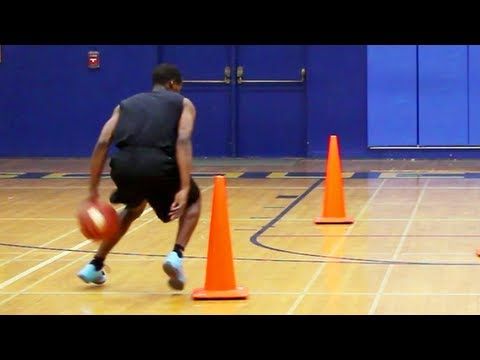
Lineup:
• The team is divided into 4 groups. One group located in each corner.
• The first player in one of the groups has the ball.
Instructions:
1. The drill is started by ball carrier 02 passing the ball 01 to the player on the right.
2. Before passing the ball, the receiver must start running in the direction of the next group, where he will make the next pass of the ball.
3. 01, having received the ball, passes it to player 05, who starts a dash towards 03.
4. After each pass, the passer joins the end of the group where the ball was passed.
5. The exercise continues according to the same scheme with passes and jerks of the players along the square in the same direction.
6. After a certain period of time, the coach changes the direction of the passes.
Options:
Turn on the second ball. If the players perform confidently, then you can enter the second ball in the opposite corner.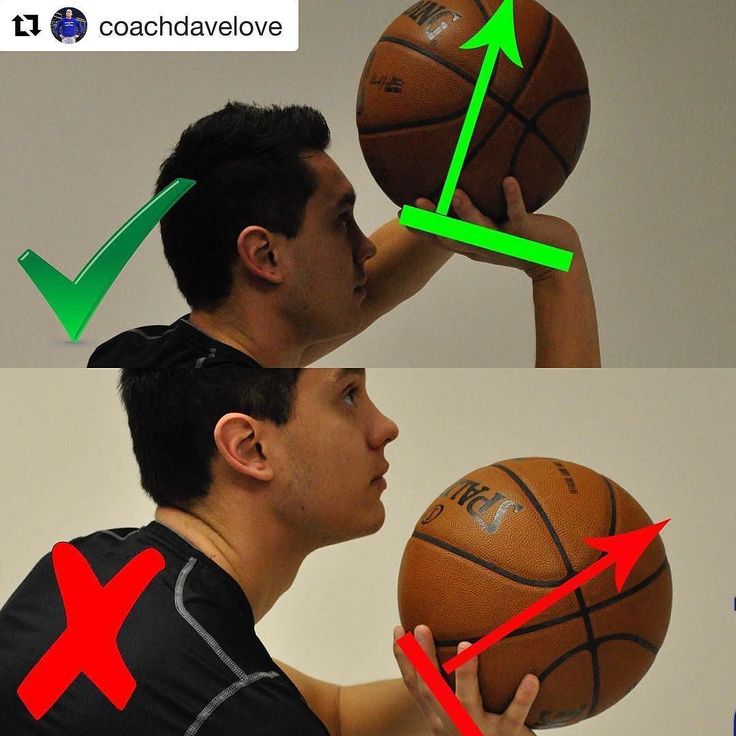
Various types of passes - The drill can be performed with one or two hand passes, bouncing, etc. One Dribbling - Players are allowed to make one dribbling before passing to the next player. This can be useful if you are passing with one hand.
TIPS:
• The receiver does not need to slow down or speed up to catch a transmission. Transfers must be accurate, timely and forward.
• The receiver must initiate the snatch in a timely manner with arms outstretched to assist the passing player in making a timely and accurate pass.
• It is very important that you do not make any mistakes during the exercise. Don't let them fall into this bad habit.
• Begin the exercise at medium speed at the beginning until the players understand it. Then increase the intensity.
4. Bronze gears.
How the drill works:
Starting at the end line at the edge of the penalty area, pairs of players pass the ball back and forth using different passes as they run across the court to the other end line.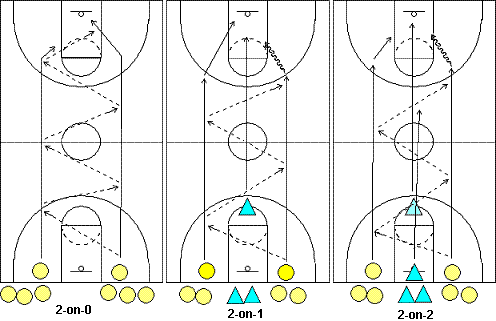 When they get there, they move closer to the touchline and come back using various passes over the players in the middle of the court.
When they get there, they move closer to the touchline and come back using various passes over the players in the middle of the court.
Purpose:
An excellent warm-up that provides many passes in a short amount of time. Including passes of various lengths and types for players in training.
Line-up:
• All players find a partner.
• Each pair has one ball.
• Pairs split into two columns behind the endline at the edge of the SR.
Instructions:
• 1. The first pair move to the opposite side at a slow pace in the middle of the court, passing the ball from the chest to each other.
• 2. As soon as the first pair is closer to the 3-point line, the next pair starts.
• 3. When the first pair of players reach the opposing endline, they move to the touchlines and return, passing the ball over the pairs of players moving in the middle of the court.
• 4. When the players return to their starting position, they rejoin the pairs in the middle of the court and continue continuous training.
• 5. Every couple of minutes, change the type of passes players make for middle pairs and outside pairs.
Options:
Gears for pairs in the middle. For the mid lanes, there are several types of passes that I recommend: from the chest, with a rebound, one-handed from the chest, and one-handed with a rebound.
Outline Passes - For outside lines there are several types of passes that I recommend: chest passes, overhead passes, one hand passes.
Remember to consider your team's age, strength and skill level when deciding which passes they should use during practice.
Tips:
• Follow the pace of the exercise; especially if it is used as one of the warm-up exercises. Walking should not be allowed, but too much traffic should also be avoided. Accurate transmission is the main focus of training.
• Players on the outside lines must not make too many passes in an arc and with a very high trajectory on their passes. They should be at a height that is safe enough not to hit the midlines, but straight enough to reach your partner quickly.
They should be at a height that is safe enough not to hit the midlines, but straight enough to reach your partner quickly.
• The ability to pass the ball with either hand is an important skill to develop. Expect mistakes when your players first perform a drill, but make sure you train them properly.
• Footwork is very important during this workout. Players must be able to catch the ball and pass back to their partner in two steps. If you are training young children and they cannot pass the ball at speed yet, slow down the pace of the exercise.
• After each run around the court, the players must switch to the sides so that they practice passing short and long passes from both sides of their body.
5. Netball
How the exercise works:
regular battle without dribbting the ball is allowed at any time. Games can be played 3 on 3, 4 on 4, or 5 on 5.
Target:
An excellent exercise that improves not only passing the ball, but also moving without the ball, positioning, jerking, etc. This exercise will lead to less use of dribbling in games and fewer losses.
This exercise will lead to less use of dribbling in games and fewer losses.
Lineup:
• Divide the players into two teams based on the number of players available for training.
• Try to make teams of the same height and skill level.
• Only one ball is needed for training.
Instructions:
1. Teams play normal full game - no dribbling!
2. The exercise is performed within the time specified by the trainer.
3. Start with the arrangement shown in the diagram.
Point system:
• The game is played up to either 5 or 11 points.
• Each 2-point roll is worth 1 point.
• Each 3-point roll is worth 2 points.
• Must win by 2 points.
• In the event of a shooting foul, the offensive player throws one free throw for 1 point.
Variations:
One Shot Allowed - Players are allowed 1 dribbling when they gain possession of the ball. This is not a requirement, just an option.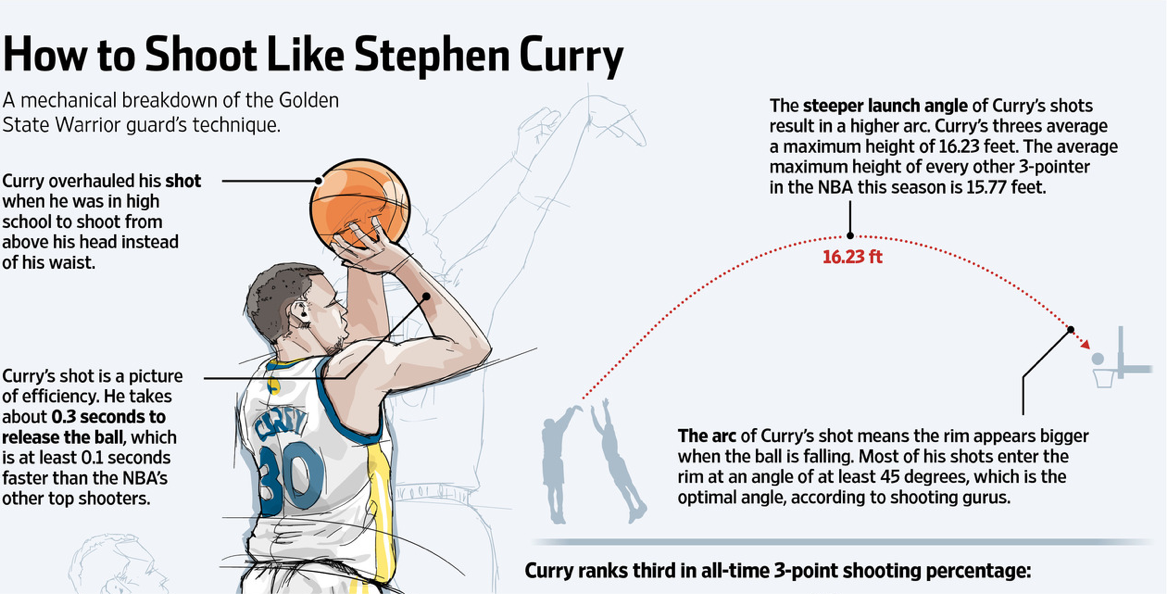
Only bounce passes allowed - Restrict your players to only use bounce passes.
3 teams. The exercise starts by dividing your team into 3 groups of 3 to 5 players. Two teams start defense in each half. The third team is in the middle of the court on offense. The offensive team chooses one side and tries to score the ball without dribbling. Same scoring system as above. After a goal is scored or the possession of the ball is changed, the defensive team receives the ball, attacks in the opposite direction. The previous offensive team may play defense up to the center line of the court. Play until one team reaches 5 or 11 points.
Tips:
• It's very important to give players instructions on how to set up wide and run smart to get the ball.
• If you need to step in to make adjustments or re-emphasize the most important points of the exercise (distance, snatches), step in but keep it short.
• All passes must be at least 3 feet long. Don't let the players run up and pass the ball from each other's hands.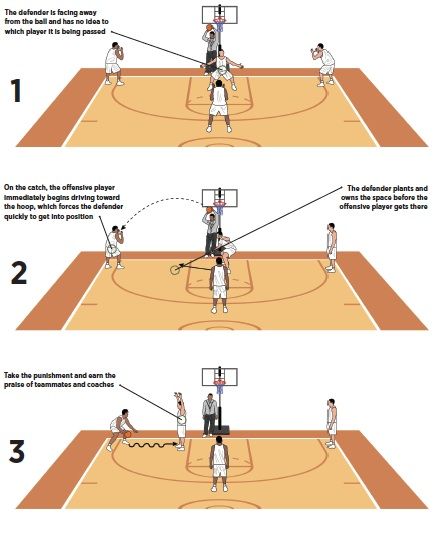
• Footwork is important in this exercise. Make sure the players are not running and that they are using turns correctly.
• Players must speak and use raised arms when rushing to the basket to receive the ball.
V. Melnychuk Today I want to tell you about a few basic exercises, by regularly performing which you can reach the next level, becoming a really good attacking player.
Yes, many articles have already been written about it and many videos have been made. Yes, we all know a few dozen exercises that promise to make you at least the next Michael Jordan. I will not reinvent the wheel, but will tell you about a series of exercises that just a year ago helped me a lot to improve in the attacking aspects of the game. Let's start the story.
Basketball drills
Mikan Drill
This drill gets its name from the first really big guy in the NBA, George Mikan. Begin to perform the exercise, located on the right side of the basketball basket (a meter and a half from the ring).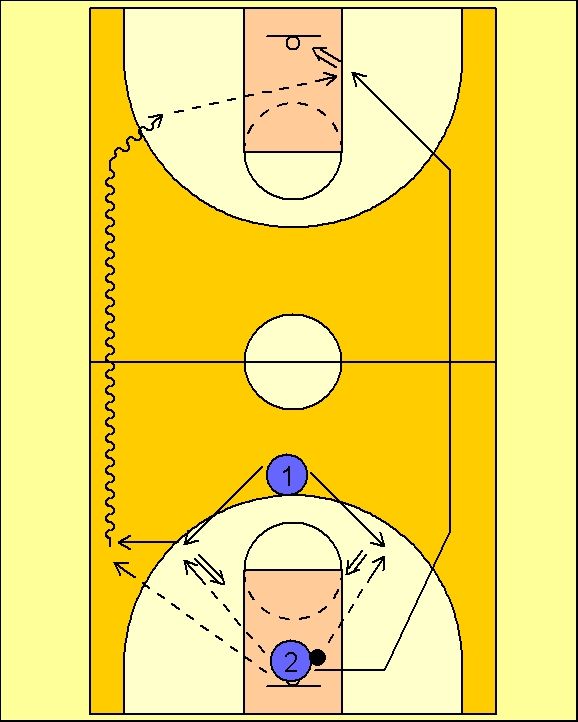 Take two steps to the left, parallel to the endline, and throw a half hook on the other side of the hoop using your left hand. Without letting the ball fall to the ground, pick it up and take 2 steps to the right (again parallel to the base line) and again throw the ball into the ring with a half hook using your right hand. Try to get into the rhythm and hit 10-20 in a row.
Take two steps to the left, parallel to the endline, and throw a half hook on the other side of the hoop using your left hand. Without letting the ball fall to the ground, pick it up and take 2 steps to the right (again parallel to the base line) and again throw the ball into the ring with a half hook using your right hand. Try to get into the rhythm and hit 10-20 in a row.
[youtube]CmFOj0nhUN8[/youtube]
This exercise will teach you how to attack with a weak hand and turn it into a formidable weapon. Personally, while doing this exercise, already on the second day I began to complete the passages with my left hand. And after a couple of weeks, the effectiveness of the attacks doubled: now the defender had to hold both sides, and I could always attack with the hand farthest from him.
Superman Drill
This exercise is very similar to the previous one. Position yourself almost on the border of the three-second zone (you always want to call it a “trapeze”, but with the change in the rules of basketball, it has lost its usual shape).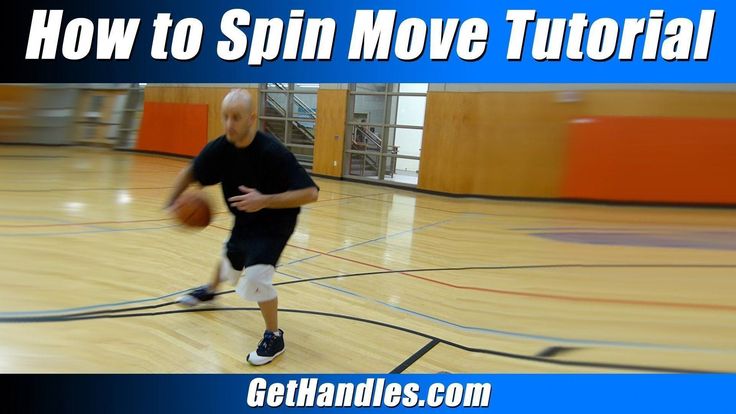 We perform a throw on the ring with one single difference: do not try to hit the ring! On the contrary, raise the trajectory higher so that the ball, bouncing off the backboard, falls on the other side of the ring. This is where you need to catch him, not allowing him to fall to the floor. Important: try to take no more than three steps to overcome the distance from one side of the ring to the other. Follow the rhythm: let the entire exercise be performed in the same rhythm. Do 10 to 20 repetitions of this exercise.
We perform a throw on the ring with one single difference: do not try to hit the ring! On the contrary, raise the trajectory higher so that the ball, bouncing off the backboard, falls on the other side of the ring. This is where you need to catch him, not allowing him to fall to the floor. Important: try to take no more than three steps to overcome the distance from one side of the ring to the other. Follow the rhythm: let the entire exercise be performed in the same rhythm. Do 10 to 20 repetitions of this exercise.
[youtube]T2Jo-2ME-z4[/youtube]
Beat the Pro
Imagine that you are playing 1 on 1 against your favorite player. You just need to beat him by being the first to score 21 points. Perform game throws (with deviation, after strides, after crossovers and sudden stops). Be clear about your opponent, how he defends against you, how he tries to cover your every throw, how he waits for the slightest mistake in order to intercept. For each roll you make, you get 1 point. For each miss, the opponent receives 2 points. When you reach 20 points (if you haven't lost before) - you need to make a "buzzer beater" and it needs to be scored. How will you do it: with an incredible deflection after a fabulous dribbling or just hitting the ball with 9meters. Try to beat the best players in your imagination. Important: be realistic when playing against Shaquille, it is foolish to push him with your back or try to shoot the ball while in close contact. Also, it would be wrong to try to overtake Rose or Jordan. In general: adequately evaluate the opponent and try to complicate your life as much as possible.
For each miss, the opponent receives 2 points. When you reach 20 points (if you haven't lost before) - you need to make a "buzzer beater" and it needs to be scored. How will you do it: with an incredible deflection after a fabulous dribbling or just hitting the ball with 9meters. Try to beat the best players in your imagination. Important: be realistic when playing against Shaquille, it is foolish to push him with your back or try to shoot the ball while in close contact. Also, it would be wrong to try to overtake Rose or Jordan. In general: adequately evaluate the opponent and try to complicate your life as much as possible.
Shoot the Shot
Do you remember the good old game "Around the World"? Sometimes it is called "Points", but that's not the point. Now we will try to add a hit percentage to this game. Also, we will add a couple of new points to it, the so-called "elbow spot".
In order to advance to the next point, you must make at least 3 out of 5 rolls.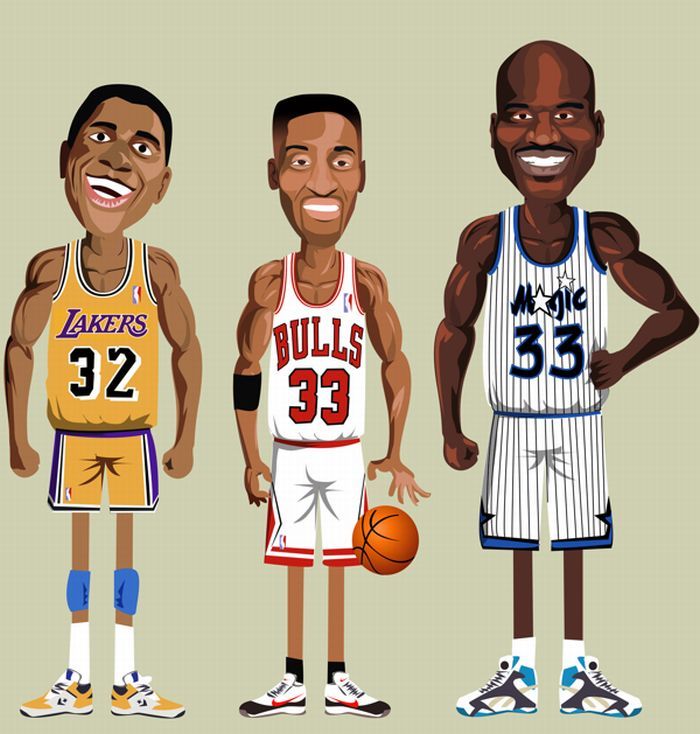 Naturally, if the level of your game (and especially your sniping skills) allows you to regularly shoot with a percentage higher than 60%, then increase the number of goals scored to 4 out of 5 from each point. Or up to 5 out of 5 from medium and 4 out of 5 from long range. Total: you have 18 points, 90 throws of which at least 54 must reach the goal. Challenge accepted?
Naturally, if the level of your game (and especially your sniping skills) allows you to regularly shoot with a percentage higher than 60%, then increase the number of goals scored to 4 out of 5 from each point. Or up to 5 out of 5 from medium and 4 out of 5 from long range. Total: you have 18 points, 90 throws of which at least 54 must reach the goal. Challenge accepted?
Ball slaps and squeeze
Throw the ball up as if it had bounced off the ring after a bad throw. Jump up, grab the rebound and squeeze the ball as hard as you can with your hands. Imagine that you had difficulty getting this rebound and now they are trying to knock it out from you. Immediately after the rebound, rotate the ball around the body (at different heights): around the head, back, knees and calves. Repeat this exercise 10-20 times.
Figure 8's - with dribble and without dribble
Eight, the famous eight is back, now with dribbling. Do you remember how Petya Maravich taught us how to handle the ball? So, now we are doing the same thing, but using dribbling.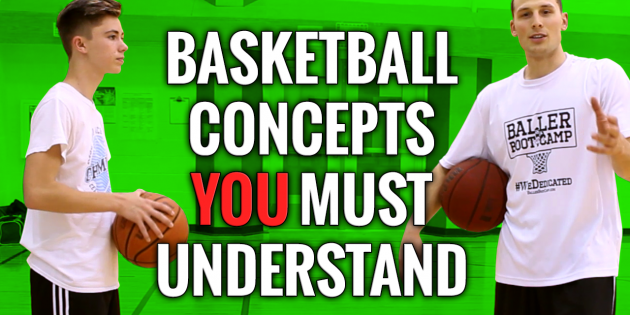 For those who find it difficult to perform such dribbling - try to perform the exercise without it.
For those who find it difficult to perform such dribbling - try to perform the exercise without it.
[youtube]DYAQoOxuskg[/youtube]
Quick hands
This is a cool exercise that is sure to be performed at every training session for young basketball players. Starting position: one hand in front, the second - behind, the ball is between the legs. After releasing the ball, you need to change the location of the hands: if the right one was in front and the left one was behind, then now the ball needs to be grabbed with the right one from behind, and the left one in front. Diversify the exercise: both hands in front, the ball between the legs. We release the ball and catch it with our hands, but from behind. Important: regular performance of this exercise will allow you to develop hand speed, which is very important for performing high-quality and fast feints.
How to do it: 30 seconds first option, 30 seconds second option. Write down how many times you managed to do the first time, and then compare with the results after a week.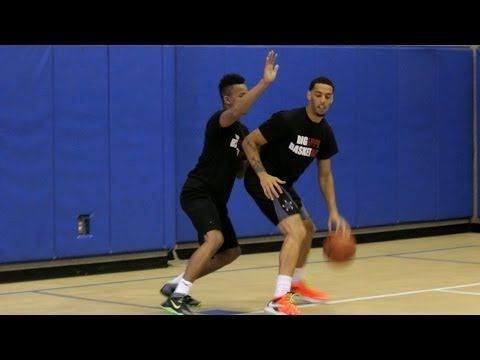
[youtube]TGh81tj6zbU[/youtube]
Tom-Tom dribble
This movement is also familiar to many of us. Stand with your legs slightly apart so that you can easily transfer the ball between them. We start with the right hand. We transfer the ball in front of us from the right hand to the left; then from the left hand, transfer under the foot to the right hand. Now with the right hand we transfer the ball behind the back - it turns out to be in the left hand and we send it back (also behind the back) to the right. This is 1 repetition. Repeat 10 times and change hands (i.e. mirror).
Drum dribble
The point is to learn how to quickly and comfortably change the pace of dribbling and its pitch. For example, right after a screen or a run, you may find yourself kicking the ball out from behind (even though you already think your opponent is offside). The most elementary countermeasure is to sharply reduce the height of the dribbling.